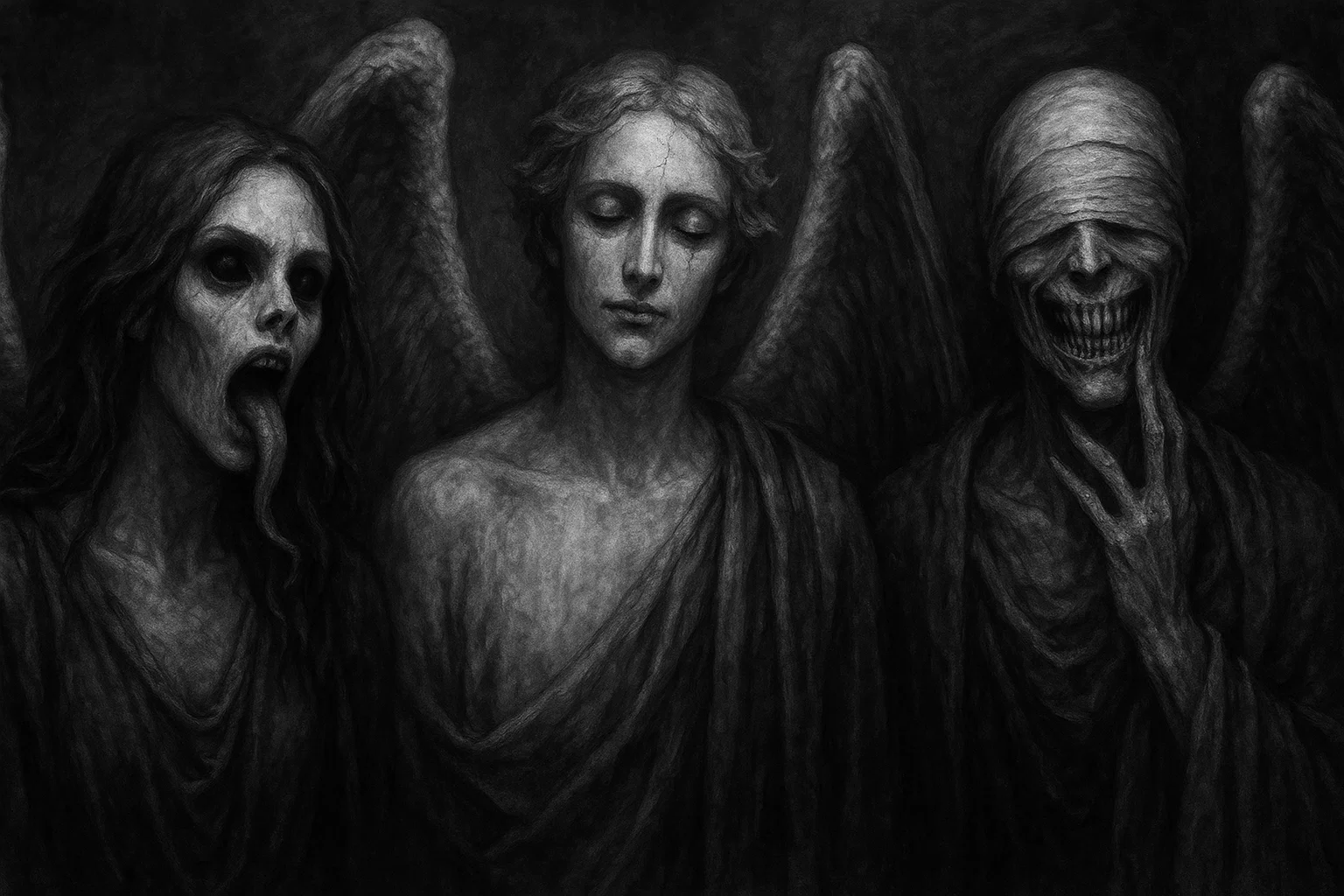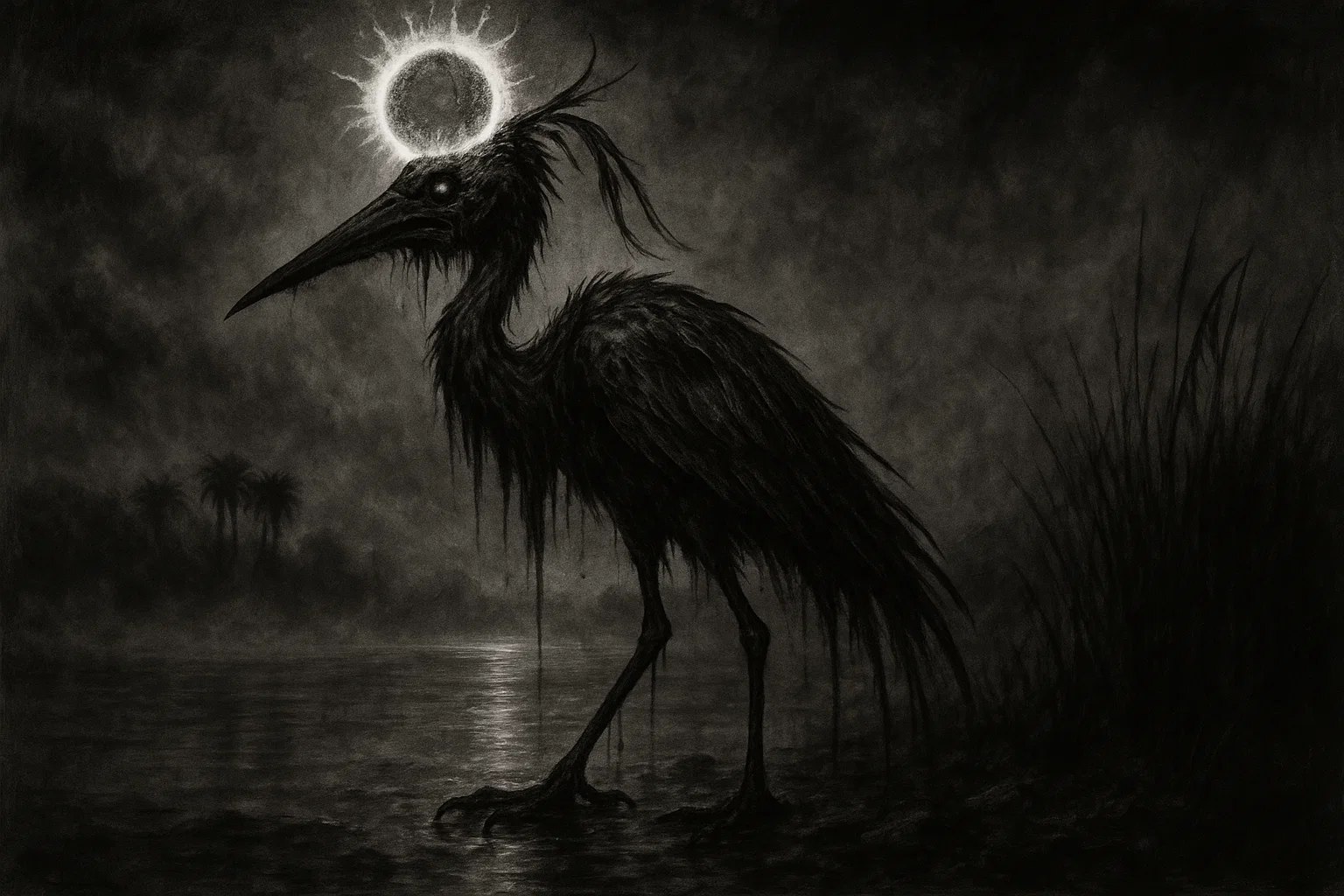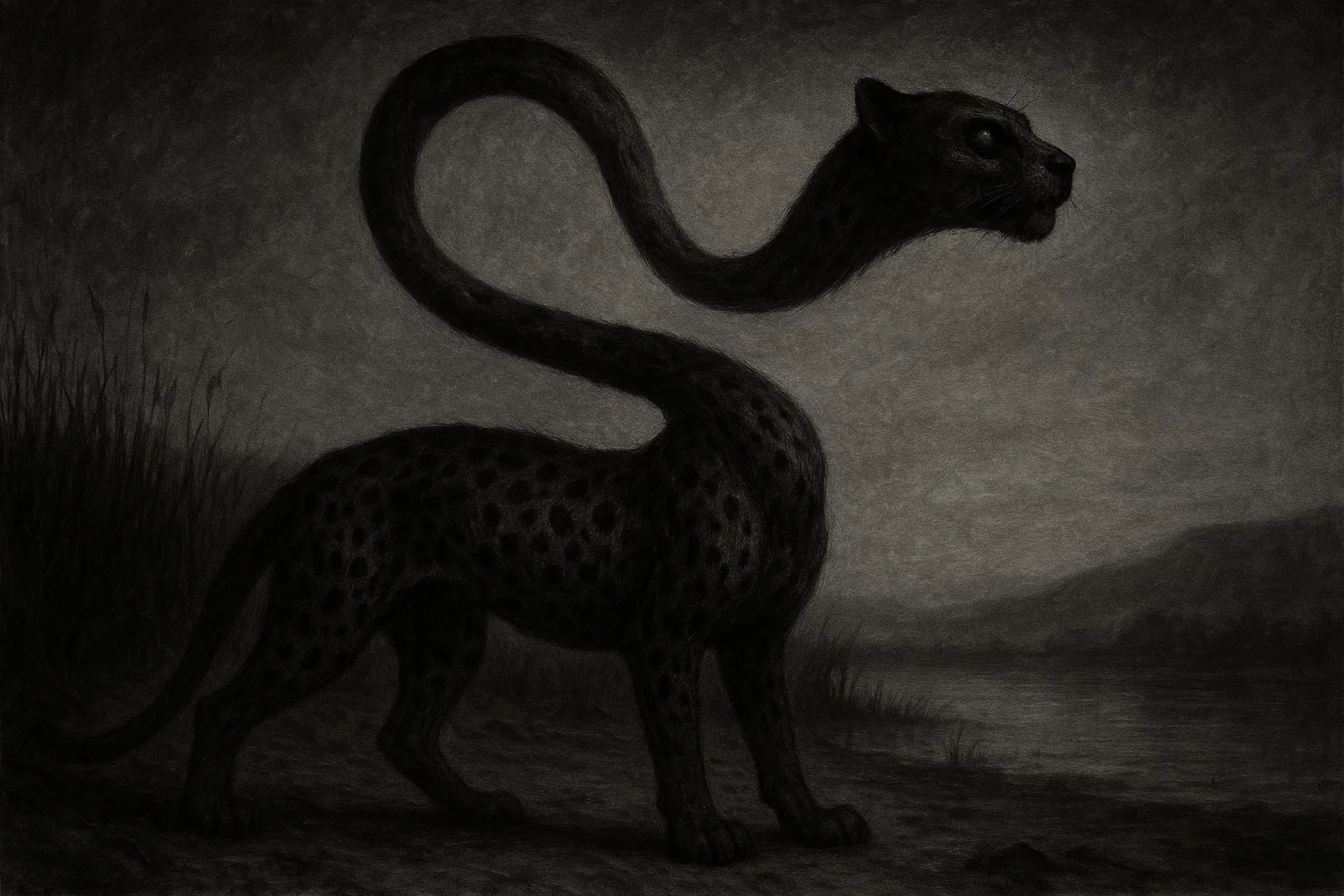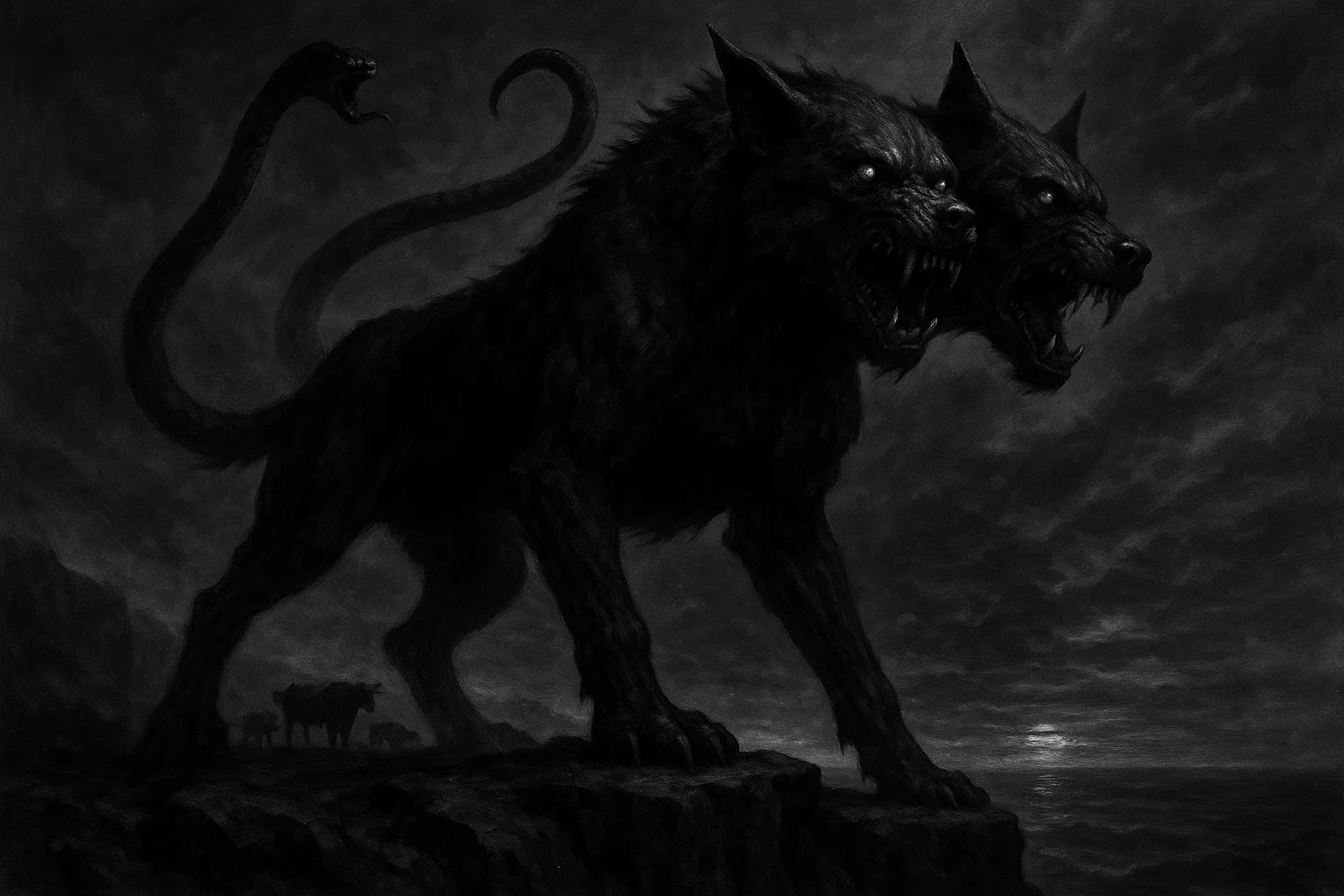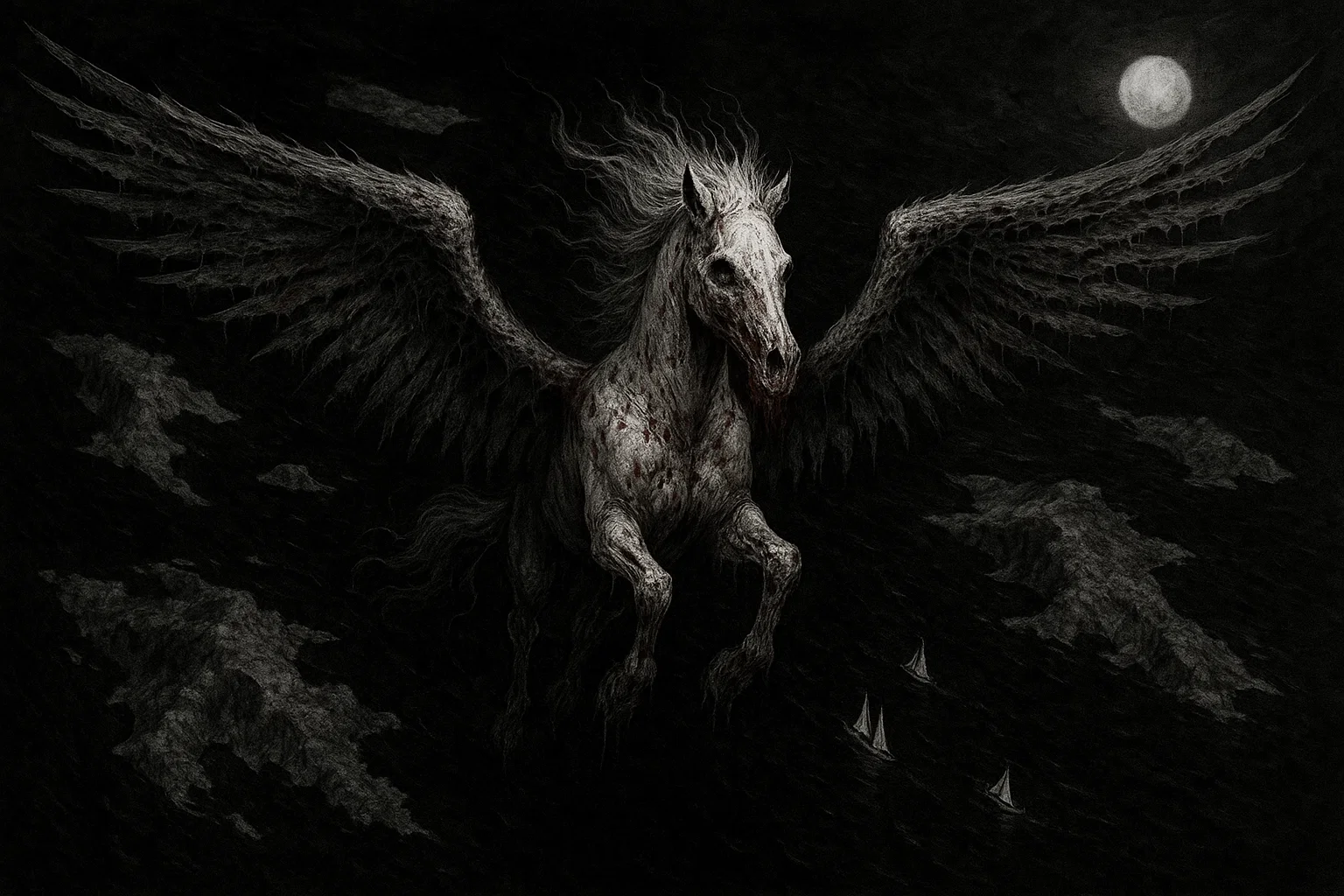In the shadowy realm of demonology, few figures captivate as much as Sitri, the enigmatic Great Prince of Hell. Known as Bitru or Sytry, Sitri ranks as the 12th spirit in the Ars Goetia, a key text within the Lesser Key of Solomon from the 17th century.
His dominion over love, lust, and secrets makes him a formidable entity, weaving chaos through human emotions. With a form that shifts from a fierce leopard with griffin wings to a deceptively beautiful human, Sitri embodies temptation and deceit.
Summary
Overview
Below is a detailed table summarizing essential facts about Sitri:
| Category | Details |
|---|---|
| Name | Sitri, Bitru, Sytry |
| Title | Great Prince of Hell, sometimes Viscount or Arch-Prince |
| Gender | Male (in human form, though some sources suggest androgynous traits) |
| Role | Demon of love, lust, passion; reveals secrets of women with mockery |
| Hierarchy | 12th spirit in the Ars Goetia, commands 60 legions of demons |
| Servitors | Commands 60 legions (specific names not detailed in primary texts) |
| Superior Demon | Likely under Lucifer or the four kings (Amaymon, Corson, Ziminiar, Gaap) |
| Powers | Ignites love and lust between men and women, makes them appear naked, reveals secrets with mockery, manipulates emotions |
| Appearance | Leopard head with griffin wings, transforms into a beautiful human (male or androgynous) |
| Etymology | Likely from Hebrew סָתַר (sathar), meaning “to hide” or “conceal”; possibly Semitic or Arabic roots tied to love or desire |
| Associated Figures | Linked to Seth (Egyptian god), Beleth, Yomyael; possibly Lilith or Leviathan in some traditions |
| Weaknesses | Vulnerable to holy symbols, exorcisms, or divine rituals (not explicitly detailed) |
| Opposing Angel/Saint | Ruled by Kabbalistic angel Hahaiah |
| Equipment/Tools | Sigil (lamen) for summoning, as per Lesser Key of Solomon |
| Pantheon | Goetic demons, Western occultism, Christian demonology |
Etymology
The name Sitri carries an air of mystery, with its origins not fully clear. Scholars often point to the Hebrew root סָתַר (sathar), meaning “to hide” or “conceal,” as a likely source.
This fits Sitri’s role as a demon who reveals hidden secrets, particularly those of women, often with a cruel twist. The paradox of a name meaning “hidden” for a demon who exposes truths highlights his deceptive nature.
In Hebrew, סָתַר can also imply protection or shelter, suggesting a dual role of concealing and revealing, which aligns with Sitri’s manipulative powers.
Alternative spellings like Bitru and Sytry appear in texts such as Pseudomonarchia Daemonum (1583) by Johann Weyer and various Ars Goetia translations.
These variations may stem from transliteration errors or regional linguistic differences during the medieval period. Some speculate that Sitri’s name could derive from Semitic or Arabic roots related to love, passion, or seduction, given his domain.
For instance, similar-sounding words in Arabic, like “sitr” (meaning cover or veil), might suggest a connection to unveiling desires, though this is not definitive.
Another theory links Sitri to the Latin “Citri” (citrus), possibly evoking bright, alluring qualities. However, this seems less likely given the lack of direct evidence.
The name’s ambiguity reflects the broader trend in demonology, where names often blend ancient languages, myths, and cultural influences, creating a complex tapestry of meaning. Sitri’s name, whether tied to concealment or desire, underscores his role as a master of emotional manipulation and deceit.
You May Also Like: The Gold of Tolosa: History’s Most Cursed Treasure?
What Does the Demon Sitri Look Like?
Sitri’s appearance is striking and dual-natured. According to the Ars Goetia, he first appears as a leopard with griffin wings, a form that blends ferocity with mythical grandeur.
The leopard, a symbol of strength and cunning, reflects his predatory nature, while griffin wings—combining eagle and lion traits—suggest a connection to both sky and earth, hinting at his supernatural power.
At the conjurer’s command, Sitri transforms into a beautiful human, typically male, though some sources describe an androgynous quality, allowing him to appear as male or female to suit the summoner’s desires.
In human form, Sitri is described as exceptionally handsome, with a seductive charm that disarms and manipulates. This shape-shifting ability mirrors his role as a deceiver, using allure to mask his dangerous intentions.
The transformation from beast to beauty symbolizes his ability to exploit human weaknesses, presenting himself as desirable while hiding his true, malevolent nature. Some interpretations link his leopard form to the Egyptian god Seth, whose chaotic essence and animalistic depictions share similarities with Sitri’s appearance.
Historical and Mythological Background
Sitri’s origins are rooted in medieval demonology, particularly within the tradition of Solomonic magic. He appears in the Ars Goetia (17th century) and Pseudomonarchia Daemonum (1583), texts claiming that King Solomon bound demons to build his temple.
As the 12th spirit, Sitri is a powerful entity summoned for tasks tied to love and lust. His role aligns with trickster archetypes across cultures, embodying both allure and danger.
Connection to Seth
A compelling theory links Sitri to the Egyptian god Seth (or Set), the deity of chaos, storms, and deserts. Seth, often depicted with a unique animal head (the “Set animal”), is known for murdering his brother Osiris out of jealousy and battling Horus for Egypt’s throne.
Like Sitri, Seth represents disruption, using trickery to achieve his ends. The leopard and griffin imagery of Sitri echoes Seth’s animalistic and chaotic nature, suggesting that medieval demonologists may have demonized this pagan god, transforming him into a Goetic spirit.
While not universally accepted, this connection highlights the syncretism between Egyptian mythology and Christian demonology.
Other Mythological Parallels
Sitri’s powers over love and lust draw parallels with other deities. In Mesopotamian mythology, Ishtar, goddess of love and war, shares Sitri’s dual nature of passion and destruction.
Similarly, the Greek Aphrodite or the Roman Venus, while not malevolent, embody love’s power to disrupt. Sitri’s mocking revelation of secrets aligns with trickster figures like Loki in Norse mythology, who uses cunning to expose truths.
These parallels suggest that Sitri’s archetype may stem from ancient deities or spirits, reinterpreted as a demon in Christian contexts.
You May Also Like: The Cursed Phone Numbers | Horror Story
The Evil Trinity
In demonological lore, Sitri forms a sinister alliance known as the evil trinity with demons Beleth and Yomyael. These fallen angels, cast out from Heaven for their rebellion, are said to have carved out domains of influence across Europe and Asia.
Their pact, steeped in deception and temptation, embodies the dark allure of Faustian bargains, offering mortals power, wealth, or victory at the cost of moral ruin.
This legend, rooted in medieval occult traditions, paints Sitri as a cunning manipulator, working alongside his allies to sow chaos and corruption.
Origins of the Evil Trinity
The concept of the evil trinity likely emerged from medieval Christian demonology, where demons were often grouped to mirror the Holy Trinity in a blasphemous parody.
Sitri, Beleth, and Yomyael, as fallen angels, are believed to have been high-ranking celestial beings before their rebellion against divine authority.
After their banishment, they established dominion over earthly regions, exploiting human weaknesses to expand their influence.
Sitri, with his mastery over love and lust, complements Beleth, who commands passion and warlike fervor, and Yomyael, a lesser-known demon associated with cunning and hidden knowledge. This trio’s combined powers create a formidable force, capable of manipulating emotions, sparking conflict, and revealing secrets to destabilize mortal lives.
The origins of this legend may trace back to apocryphal texts or oral traditions not fully documented in primary grimoires like the Ars Goetia.
Some scholars suggest the trinity reflects a synthesis of Christian demonology with older pagan myths, where triadic groupings of deities or spirits were common, such as the Norse Norns or the Greek Fates. The evil trinity thus serves as a cautionary tale, warning against the seductive promises of demonic pacts.
Roles and Dynamics
Each demon in the evil trinity plays a distinct role, amplifying their collective menace.
Sitri, as the Great Prince of Hell, specializes in igniting lust and revealing secrets, often with a mocking cruelty that exposes vulnerabilities. His ability to make people appear naked—symbolizing emotional or moral exposure—complements his allies’ powers.
Beleth, a King and Prince in the Ars Goetia, commands 85 legions and inspires intense love or fanatical devotion, often leading to destructive obsession. His warlike nature, symbolized by his arrival on a pale horse with trumpets, suggests a role in inciting conflict or rallying forces.
Yomyael, though less detailed in primary texts, is described in some occult traditions as a demon of hidden knowledge and deception, skilled in manipulating truths to ensnare mortals.
The dynamics between these demons are complex. Sitri’s seductive charm likely serves as the initial lure, drawing mortals into the trinity’s influence.
Beleth escalates this temptation into obsession or conflict, while Yomyael seals the pact with promises of forbidden knowledge, ensuring the mortal’s downfall. Their collaboration is not one of camaraderie but of mutual benefit, as each seeks to expand their dominion through human suffering.
This synergy makes the evil trinity particularly dangerous, as their combined powers target the heart, mind, and soul.
The Legend of Peter the Great
A prominent tale involving the evil trinity centers on Peter the Great of Russia during the Great Northern War (1700–1721), a conflict where Russia vied for supremacy against Sweden and other powers.
According to folklore, Peter, desperate to secure victory and expand Russian influence, turned to occult practices to summon Sitri, Beleth, and Yomyael.
The demons, appearing in a ritual conducted in a secluded fortress, offered a Faustian bargain: victory over the Swedes in exchange for a heavy moral cost, often interpreted as Peter’s soul or the suffering of his people.
The legend claims Sitri used his powers to sow discord among Swedish commanders, inflaming personal rivalries and weakening their strategies. Beleth rallied Peter’s troops with fanatical zeal, ensuring fierce loyalty and battlefield success, particularly at the Battle of Poltava (1709), a decisive Russian victory.
Yomyael, meanwhile, provided strategic insights, revealing Swedish plans through supernatural means. While historical records attribute Peter’s success to military reforms and alliances, the legend persists in occult circles, portraying the evil trinity as the hidden force behind Russia’s triumph.
This tale, likely apocryphal, reflects the era’s fascination with demonic intervention in human affairs. It also underscores Sitri’s malevolent role, as his manipulation of love and secrets destabilized enemies, paving the way for chaos.
The story warns of the consequences of such pacts, as Peter’s later life was marked by personal turmoil and harsh policies, seen by some as the demons’ price.
You May Also Like: Messages from Beyond | Horror Story
Broader Mythological Context
The evil trinity legend parallels other tales of demonic alliances in global mythologies. In Persian mythology, the daevas, malevolent spirits, sometimes worked in groups to oppose divine order, similar to the trinity’s rebellion.
In Hindu lore, the asuras, demonic beings, often collaborated to challenge the gods, much like Sitri’s alliance with Beleth and Yomyael. These parallels suggest the evil trinity may draw from ancient archetypes of chaotic, cooperative spirits.
In Christian demonology, the trinity’s actions echo the temptations of Satan in biblical narratives, such as the temptation of Jesus.
The Faustian bargain motif, central to the trinity’s legend, also appears in stories of Faust, who sold his soul to Mephistopheles for knowledge and power. Sitri’s role in these tales reinforces his image as a deceiver, using lust and secrets to lure mortals into ruin.
Historical Mentions
The following table details historical texts mentioning Sitri:
| Text/Grimoire | Description | Excerpt |
|---|---|---|
| Ars Goetia (Lesser Key of Solomon) | Sitri, the 12th spirit, a Great Prince, appears as a leopard with griffin wings, transforms into a beautiful human, causes love, makes people appear naked, reveals women’s secrets, commands 60 legions. | “The Twelfth Spirit is Sitri. He is a Great Prince and appeareth at first with a Leopard’s head and the Wings of a Gryphon, but after the command of the Master of the Exorcism he putteth on Human shape, and that very beautiful. He enflameth men with Women’s love, and Women with Men’s love; and causeth them also to show themselves naked if it be desired. He governeth 60 Legions of Spirits.” |
| Pseudomonarchia Daemonum (Johann Weyer) | Sitri, alias Bitru, a great prince, appears with a leopard’s face and griffin wings, takes human form, inflames love, reveals women’s secrets with mockery, commands 60 legions. | “Sitri, alias Bitru, is a great prince, appeering with the face of a leopard, and having wings as a griffen: when he taketh humane shape, he is verie beautiful, he inflameth a man with a womans love, and also stirreth up women to love men, being commanded he willinglie deteineth secrets of women, laughing at them and mocking them, to make them luxuriouslie naked, and there obeie him sixtie legions.” |
| The Discoverie of Witchcraft (Reginald Scot) | Describes Sitri as a demon who inflames love and reveals secrets, emphasizing his seductive and deceptive nature. | “Sitri… causeth men to be enamored of women, and women of men; he discovereth also women’s secrets.” |
Sitri’s Powers and Abilities
Sitri’s powers center on love, lust, and emotional manipulation, making him a dangerous force in demonology.
He can ignite intense passion between men and women, often leading to obsessive or destructive relationships.
This ability goes beyond simple attraction, fostering desires that can disrupt lives or moral values. His power to make people appear naked is symbolic, stripping away facades to expose vulnerabilities or true intentions. Sitri’s most sinister ability is revealing secrets of women, often with a mocking tone, which adds cruelty to his manipulation.
In modern occult practices, Sitri is sometimes invoked for love spells or to enhance charisma. Practitioners may seek his aid to attract lovers or boost personal allure, but such rituals are risky, as Sitri’s assistance often comes with unintended consequences.
His powers exploit human weaknesses, sowing discord and betrayal. Unlike demons with broader destructive abilities, Sitri’s focus on emotional chaos makes him uniquely perilous.
In pop culture, Sitri’s role is less prominent, but some fictional works, like those in supernatural fan communities, depict him with expanded powers, such as influencing dreams or enhancing psychic abilities.
These modern interpretations, while not traditional, reflect his enduring image as a manipulator of the heart and mind.
You May Also Like: Ipos, the Prince of Hell: Fallen Angel or Something Older?
Sitri’s Role in the Hierarchy of Hell
In the Ars Goetia, Sitri holds the rank of Great Prince, a high position among the 72 spirits, commanding 60 legions of demons—each legion potentially numbering thousands.
This places him among hell’s elite, below the four great kings (Amaymon, Corson, Ziminiar, Gaap) and possibly Lucifer, the ultimate ruler in Christian demonology. His domain is likely a region of hell tied to emotional torment, where he oversees legions that carry out his bidding in manipulating human desires.
Sitri’s servitors are not named in primary texts, but as a Prince, he commands a vast army of lesser demons. His superiors, the four kings, govern broader aspects of hell, while Sitri’s focus is narrower, targeting love and lust.
Notable allies include Beleth and Yomyael, with whom he forms an “evil trinity” in some legends, collaborating to tempt mortals with power or success. Adversaries might include demons like Astaroth, who shares his domain over sexuality but competes for influence, or higher-ranking kings like Bael or Paimon, who outrank him.
Sitri’s role reflects his status as a master of emotional chaos, using his legions to spread temptation and discord in the mortal realm. His high rank underscores his power, but his focus on personal desires makes him a subtle yet devastating force.
Astrological Associations and Symbolism
| Category | Association | Description |
|---|---|---|
| Dates | July 12–21 or May 14–18 | Times when Sitri’s influence peaks, tied to Cancer’s emotional depth. |
| Direction | West | Associated with water, emotions, and the setting sun, reflecting Sitri’s lust. |
| Tarot Card | 4 of Cups | Symbolizes apathy, missed opportunities, aligning with Sitri’s deceptive allure. |
| Planet | Jupiter | Represents expansion, excess, amplifying Sitri’s passion and chaos. |
| Metal | Tin | Linked to Jupiter, symbolizes stability, masking Sitri’s disruptive nature. |
| Element | Earth (under Ziminiar) | Grounds Sitri’s powers, tied to material desires and seduction. |
| Secondary Element | Water | Reflects emotional manipulation, linked to Cancer and deceit. |
| Color | Blue, Deep Purple | Blue for emotional depth, purple for mystery, enhancing Sitri’s allure. |
| Plant | Hyacinth | Symbolizes beauty, love, but also sorrow, fitting Sitri’s cruel mockery. |
| Incense | Cedar, Sandalwood | Cedar for grounding, sandalwood for seduction, used in rituals for Sitri. |
| Zodiac | Cancer, sometimes Taurus | Cancer for emotions, Taurus for sensuality, tied to Sitri’s lustful powers. |
| Crystals | Moonstone, Sapphire, Rose Quartz | Moonstone for intuition, sapphire for wisdom, rose quartz for love, amplifying Sitri’s influence. |
| Animal | Leopard, Serpent | Leopard for cunning, serpent for deception, reflecting Sitri’s dual forms. |
| Day of Week | Thursday | Ruled by Jupiter, ideal for summoning Sitri in occult practices. |
| Ritual Timing | Night, especially Waning Moon | Night enhances Sitri’s dark powers, waning moon for revealing secrets. |
| Numerology | Number 12 | As the 12th spirit, symbolizes completion, tied to Sitri’s mastery of chaos. |
The 4 of Cups tarot card, symbolizing apathy or missed opportunities, aligns with Sitri’s ability to distract with fleeting desires.
Jupiter, associated with expansion and excess, reflects his tendency to amplify passions to destructive levels.
Cancer, a water sign, ties to emotional depth and intuition, fitting his manipulation of feelings.
Tin and hyacinth evoke stability and beauty, masking his chaotic nature.
Blue and cedar suggest calmness and grounding, ironic given his disruptive powers.
Some modern sources associate Sitri with the element of water and Taurus, emphasizing sensuality and emotional fluidity.
These differences reflect varying occult traditions, but the Cancer-Jupiter association is more common in Goetic texts. Astrologically, Sitri signifies indiscretion, deceit, and untruth, reinforcing his role as a tempter.
You May Also Like: Who Is Seere? The 70th Demon of the Ars Goetia
Sitri Sigil
Sitri’s sigil, as described in the Ars Goetia, is a complex geometric design used in summoning rituals.
Worn as a lamen (a magical pendant), it establishes a connection between the conjurer and Sitri. The sigil features intricate lines, curves, and shapes, often within a circle or triangle, symbolizing his dual earthly and celestial nature.
It acts as a key to invoke and control Sitri, ensuring the summoner’s dominance. The sigil’s unique pattern distinguishes it among Goetic symbols, embodying Sitri’s essence as a master of deception and desire.
Comparison with Other Demons
| Demon | Rank | Powers | Similarities to Sitri |
|---|---|---|---|
| Asmodeus | King | Incites lust, causes marital discord, grants gambling luck | Shares lust and seduction focus |
| Astaroth | Great Duke/Prince | Promotes sexual corruption, reveals secrets, grants knowledge | Both manipulate secrets, sexuality |
| Zepar | Duke | Causes women to love men, induces barrenness | Both incite love, emotional manipulation |
| Sallos | Duke | Fosters love between sexes, promotes harmony | Shares love manipulation |
| Belial | King | Encourages deceit, lawlessness, grants favors | Both excel in deception |
| Paimon | King | Grants knowledge, controls spirits, ensures loyalty | Both are high-ranking, infernal elites |
| Vassago | Prince | Reveals hidden things, predicts future, gentle demeanor | Shares secret-revealing ability |
| Bael | King | Grants invisibility, wisdom, commands 66 legions | Both high-ranking, manipulative |
| Furfur | Earl | Causes love, storms, teaches secrets | Shares love and secret powers |
| Dantalion | Duke | Manipulates thoughts, induces love, reveals desires | Both target emotions, desires |
| Amon | Marquis | Provokes love, reconciles disputes, foretells future | Shares love manipulation |
| Barbatos | Duke | Reveals hidden treasures, understands animal speech, reconciles friends | Shares secret-revealing ability |
| Leraje | Marquis | Causes conflicts, excels in archery, spreads pestilence | Both incite chaos, manipulation |
Conclusion
Sitri, the Great Prince of Hell, is a complex and dangerous figure in demonology. His mastery over love, lust, and secrets makes him a potent symbol of temptation and chaos.
From his roots in medieval grimoires to speculative connections with ancient deities like Seth, Sitri’s lore reflects humanity’s fascination with desire and its consequences. His powers, while alluring, are steeped in deceit, exploiting vulnerabilities to sow discord.
Through historical texts, astrological associations, and mythological parallels, we see Sitri as a multifaceted entity, both seductive and malevolent.
His enduring presence in occult traditions warns of the dangers of unchecked passion, cementing his place as a dark archetype in the infernal hierarchy.

